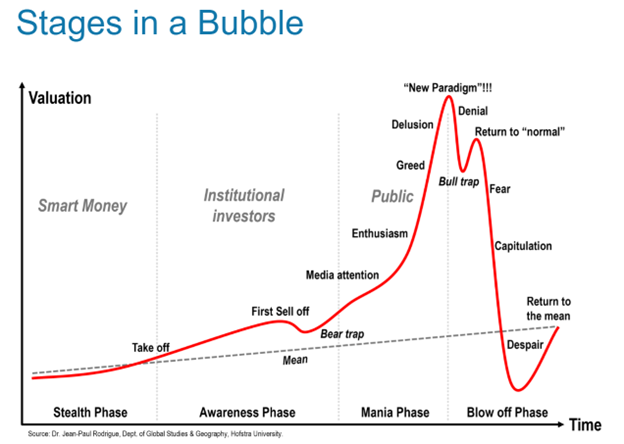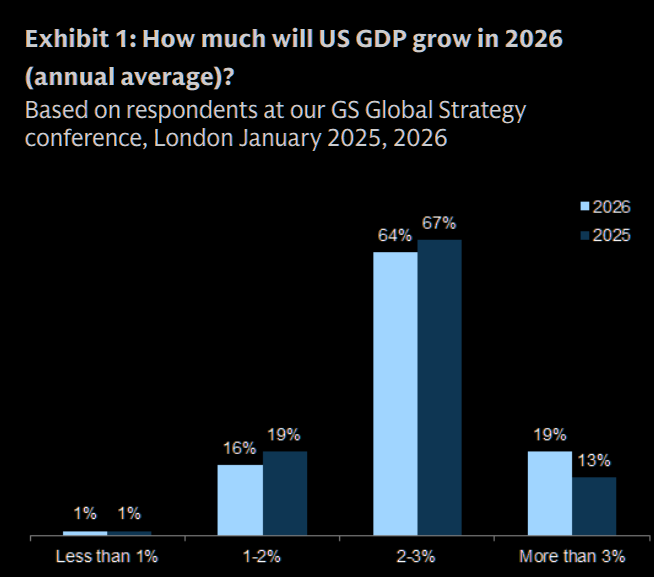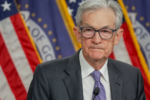 Overview: The dollar has returned from the weekend with a better bid tone. It is firmer against all the G10 currencies but the yen, Swiss franc, and Swedish krona, which are marginally firmer. The market seems reluctant to extend the euro or Canadian dollar upticks ahead of the central bank meetings this week, though, ironically, sterling’s 0.25% decline leads the major currencies. Election news is a key driver today. A dramatic victory for the Morena party in Mexico, which could allow constitutional changes that eluded AMLO has spurred sales of the Mexican peso. It is the worst performing EM currencies, getting clocked for more than 2%. A coalition government is necessary in South Africa, and it is seen constructively. The rand is up about 0.25% and is one of the strongest EM currencies today. The Indian rupee is stronger as Modi appears to have broadened his support since the 2019 election.
Overview: The dollar has returned from the weekend with a better bid tone. It is firmer against all the G10 currencies but the yen, Swiss franc, and Swedish krona, which are marginally firmer. The market seems reluctant to extend the euro or Canadian dollar upticks ahead of the central bank meetings this week, though, ironically, sterling’s 0.25% decline leads the major currencies. Election news is a key driver today. A dramatic victory for the Morena party in Mexico, which could allow constitutional changes that eluded AMLO has spurred sales of the Mexican peso. It is the worst performing EM currencies, getting clocked for more than 2%. A coalition government is necessary in South Africa, and it is seen constructively. The rand is up about 0.25% and is one of the strongest EM currencies today. The Indian rupee is stronger as Modi appears to have broadened his support since the 2019 election.
Indian stocks have advanced by more than 3%, nearly matching the year-to-date advance. Generally, equities are firmer. Japan, Hong Kong, Taiwan, and South Korean markets rallied more than 1% today. Europe’s Stoxx 600 is up for the third consecutive session, and US index futures are trading with a firmer bias. Bonds have rallied. European benchmark 10-year yields are 2-4 basis points lower. The 10-year US Treasury yield is off a couple of basis points to 4.48%. Gold reversed lower ahead of the weekend and slipped through $2015 today, its lowest level since May 9 before recovering to back to almost $2030. Despite OPEC+ decision to extend the voluntary cuts but begin phasing out the 2 mln barrel output cut agreement in Q4 has left the market nonplussed. July WTI held above last week’s low (~$76.65) and was capped near $77.50, near the 200-day moving average.
Asia Pacific
China’s Caixin PMI has been running stronger than the one generated by China Federation of Logistics and Purchasing. The fact that today’s Caixin manufacturing PMI was ticked up to 51.7 from 51.4 (51.6 expected) while the other one unexpectedly fell back below 50 (49.5 vs. 50.4) is not particularly revealing. The other components of Caixin’s survey will be released early Wednesday. Still, the data will not change the general expectation that Beijing must take more action if its GDP target of 5%. Last week, China announced export licenses will be required as of July 1 for a wide range of products that have dual civilian/military purposes, including airplane parts, gas turbines, aerospace engines, and bullet-proof materials. The US is in the top three destinations for these Chinese exports. Separately, after Chinese auto exports, the other highly sensitive issue now is China’s military assistance to Russia. However, most approaches seem to be too narrow. Consider nitrocellulose, which is one of the main ingredients in gunpowder. China accounts for 70% of the world’s supply, though when critics talk about excess capacity, they are not referring to nitrocellulose. In any event, earlier this year, some European officials blamed limited shipments from China that prevented the delivery of some weapons to Ukraine. Turning to Japan, Q1 cap spending and corporate sale/profitability were reported softer than expected (6.8% vs. 11.0%) but stronger corporate profitability (15.1% vs. 8.3%). The final May manufacturing PMI confirmed the preliminary estimate and the first reading above 50 since October 2022, with the one exception of May 2023, though, at 50.4 slightly below the flash reading (50.5). The highlight this week is Wednesday and Friday with the April labor earnings and household spending reports. Both should underscore the Q2 economic recovery. Australia’s May manufacturing PMI stand at 49.7, up from 49.6 initially. The highlight this week is the Q1 GDP (0.2% quarter-over-quarter) is expected the same as Q4 23 on Wednesday and the April trade balance on Thursday.
The dollar recovered from a six-day low (~JPY156.40) last Thursday to a pre-weekend high a yen higher. At the end of last week, Japanese data confirmed what the market has suspected about the magnitude of intervention in late April and May. That confirmation and the decline in US yields may give the market pause near JPY158 without fundamental cover to challenge Japanese officials. The dollar reached nearly JPY157.50 in the local session before easing to find support in Europe near JPY157. The Australian dollar has chopped between $0.6600 and $0.6700 without closing outside that range since May 8. It is in a little more than a 15-tick range around $0.6650. It is going nowhere quickly. The PBOC set the dollar’s reference rate at CNY7.1086 (CNY7.1088 Friday). The average in the Bloomberg survey was CNY7.2299 (CNY7.2398 Friday). The dollar found good bids in the offshore market near CNH7.25 last week. It is consolidating within the pre-weekend range in quiet turnover. Last week’s high was slightly above CNH7.2750.
Europe
The eurozone final manufacturing PMI (47.3 vs. 47.4 preliminary estimate) shows that the recovery that is unfolding is far from complete. This reflected an unexpected drop in the Italian reading (45.6 vs 47.3 in April) and a downward revision in France (46.4 vs 46.7). The manufacturing PMI has not been above the 50 boom/bust level since June 2022. The final composite reading (and services) will be published Wednesday, but the preliminary reading rose to 52.3 from 51.7 in April and is the highest since last May. It is not fallen since October 2023. There is little doubt that the ECB will deliver its first rate cut in the cycle on June 6. At the same time, voting for the European Parliament will begin. A decision about tariffs on Chinese-made EV has been postponed until a new European Commission is in place. A general shift to the right is expected. The final UK manufacturing PMI was 51.2, down from the 51.3 initial estimate and 49.1 in April. The UK’s election is not until July 4. Labour, which has shifted to the right and pushed out many on its left-wing, looks poised to lead the next government, but some observers doubt that it will secure an outright majority. The UK is so uncomfortable with coalition governments, often referred to as a “hung parliament.” The UK economy has also recovered from the contraction in H2 23, but the pace of growth looks set to slow from the 0.6% quarter-over-quarter Q1 24 performance.
The euro corrected lower in the second half of last month. We were looking for a deeper correction of the three-cent rally off the mid-April low. Last week, it held important support near $1.0785, and traded nearly a cent higher ahead of the weekend. It has not traded above $1.09 since March 21. Resistance above there may be in the $1.0935-50 area. Still, a rally like that ahead of the ECB meeting, for which there is universal expectation of a cut, and/or ahead of the US employment data on Friday would be surprising, especially given that the speculative (non-commercial) accounts in the futures market are net long euros. The single currency is trading so far today in about a quarter-cent range below $1.0860. Sterling rallied five cents off its April lows, set a week after the euro’s. It came off sharply after probing $1.28 last week. It fell to nearly $1.2680 where it caught a good bid that lifted it to $1.2765 ahead of the weekend. Still, we think sterling is carving out a top. It is being pushed back below $1.27 in Europe. A convincing break of the $1.2675 area would lend credence to the view. Sterling’s surge against the euro since mid-May appears to have been snapped. The euro fell from over GBP0.8610 in mid-May to GBP0.8485 in late May, a level not seen since August 2022. The GBP0.8550-70 area may offer nearby resistance.
America
Today could begin the most important two weeks until early September for US data. The ISM manufacturing and services surveys seem to be given more weight than the PMI. May auto sales and the April trade balance will help firm forecasts for Q2 GDP. The median forecast in Bloomberg’s latest monthly survey is for 2.3% growth, up from 1.6%. The Atlanta Fed’s GDP Tracker is at 2.7% as of the end of last week. Still, the most important high-frequency data point this week is the jobs report on Friday. The median in Bloomberg’s survey is for 185k increase in nonfarm payrolls (175k in April). Given the month-to-month volatility, it is sometimes difficult to see the trend, but job growth is clearly slowing on a trend basis. And it is gradual. Consider that the six-month average in April was 242k. In April 2023, the six-month average, after the revisions, was 265k. Before getting to Canada’s employment report on June 7, the Bank of Canada meets on June 5. The swaps market and Bloomberg’s survey converge and give around a 2/3 chance that the Bank of Canada delivers its first rate cut, becoming the three G10 central bank to do so (behind Switzerland and Sweden). However, the market bumped the odds to a little more than 80% after the softer than expected Q1 GDP before the weekend. The market anticipates another cut in Q4. Mexico sees some survey data and worker remittances, but the election results and the broader dollar direction may be the key for the peso. Sheinbaum scored a resounding victory, and the Morena party a secured a 2/3 super-majority, which ostensibly allows it to change the constitution, which is spooking investors today.
The US dollar posted its lowest close since May 20 before the weekend, near CAD1.3635. It has not closed below CAD1.3600 for almost two months. The greenback approached CAD1.36 in Asia Pacific activity today but reversed higher and it is testing the CAD1.3660 in Europe. With around an 80% chance of a Bank of Canada rate cut on Wednesday (according to the swaps market), a push to new two-month lows for the greenback would seem surprising. The Mexican peso strengthened in the last session ahead of the election for the first time in three sessions. Still, it was the second consecutive declining week for the peso. The peso initially strengthened as the early election results were reported. However, as the magnitude of Sheinbaum’s victory became apparent, the peso was sold. The dollar, which settled slightly north of MXN17.0 surged to MXN17.38. Recall that the peso’s flash crash high in April saw the dollar scale up to MXN18.21. The Chilean peso fell 3% in the past two weeks, in part due to the downside reversal of copper. The Brazilian real is off 2.8% over the past two weeks. Concerns over fiscal policy and the devasting flood weighed on sentiment.
Full story here Are you the author? Previous post See more for Next postTags: #USD,China,Currency Movement,EMU,Featured,India,Japan,Mexico,newsletter,US


























